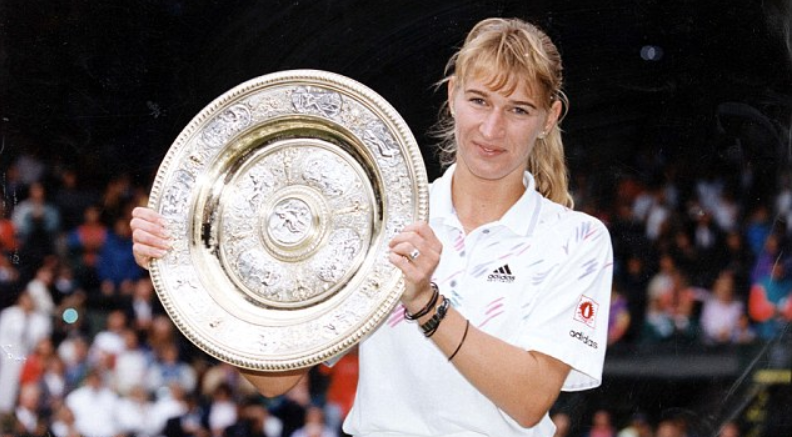Steffi Graf is widely regarded as one of the greatest tennis players of all time. Her career, which spanned from the early 1980s to the mid-1990s, not only shaped the golden era of women’s tennis but also set new standards for excellence in the sport. Graf’s unparalleled achievements have inspired generations of athletes, both on and off the court. She remains an iconic figure in tennis history, known for her powerful game, mental toughness, and ability to adapt to challenges.
Born on June 14, 1969, in Mannheim, Germany, Steffi Graf was introduced to tennis at an early age, and her talent was evident from the start. By 13, she had already become one of the top junior players in the world. Graf’s rise in the professional ranks was swift, and in 1986, at the age of 16, she won her first Grand Slam title at the French Open. This victory was a sign of things to come, as it marked the beginning of one of the most dominant careers in tennis history.
What truly set Graf apart was her extraordinary versatility. She was known for her powerful forehand, often referred to as one of the best shots in tennis history, and her athleticism allowed her to dominate on all surfaces. Her aggressive style of play was complemented by an unshakable mental approach. Graf was known for her fierce determination, staying focused even in the most pressure-filled moments. Her ability to block out distractions and stay in the moment made her a formidable opponent for anyone on the court.
One of Graf’s most remarkable accomplishments came in 1988, when she completed the Golden Slam—winning all four Grand Slam titles in the same year, as well as the Olympic gold medal in Seoul. This feat has never been duplicated, and it cemented Graf’s place in the history books as the first and only player to achieve such a monumental accomplishment in a single season. The 1988 season was arguably the peak of her career, as she dominated women’s tennis, winning 22 singles titles, including five Grand Slams.
Throughout her career, Graf amassed 22 Grand Slam singles titles, the most by any player in the Open Era until Serena Williams surpassed her. However, her record of 22 remains a significant achievement in the sport, showcasing her consistency and excellence over a span of 17 years. Graf’s rivalries with other tennis legends like Martina Navratilova, Chris Evert, and Monica Seles shaped many iconic moments in tennis history, and her battles with these legends contributed to the excitement and drama of women’s tennis during the late 1980s and early 1990s.
Off the court, Graf was also admired for her humility and grace. Despite her tremendous success, she maintained a low-key, private life and often shied away from the spotlight. She was known for her quiet demeanor, focusing on her game rather than on fame. Her sportsmanship and respect for her opponents earned her admiration across the tennis world.
After retiring from tennis in 1999, Graf transitioned into a life of philanthropy. She has been involved in several charitable endeavors, particularly in supporting children’s education and helping at-risk youth. Graf’s influence on tennis and sport, in general, continues to inspire athletes worldwide, as her story is one of dedication, perseverance, and achieving greatness against the odds.
Steffi Graf’s legacy extends far beyond her accomplishments on the court. She set the bar for excellence, inspiring countless young athletes to follow in her footsteps. Through her unparalleled achievements, her poise, and her contributions to the sport, Graf remains one of tennis’s greatest icons—an inspiration to all who aspire to greatness.
